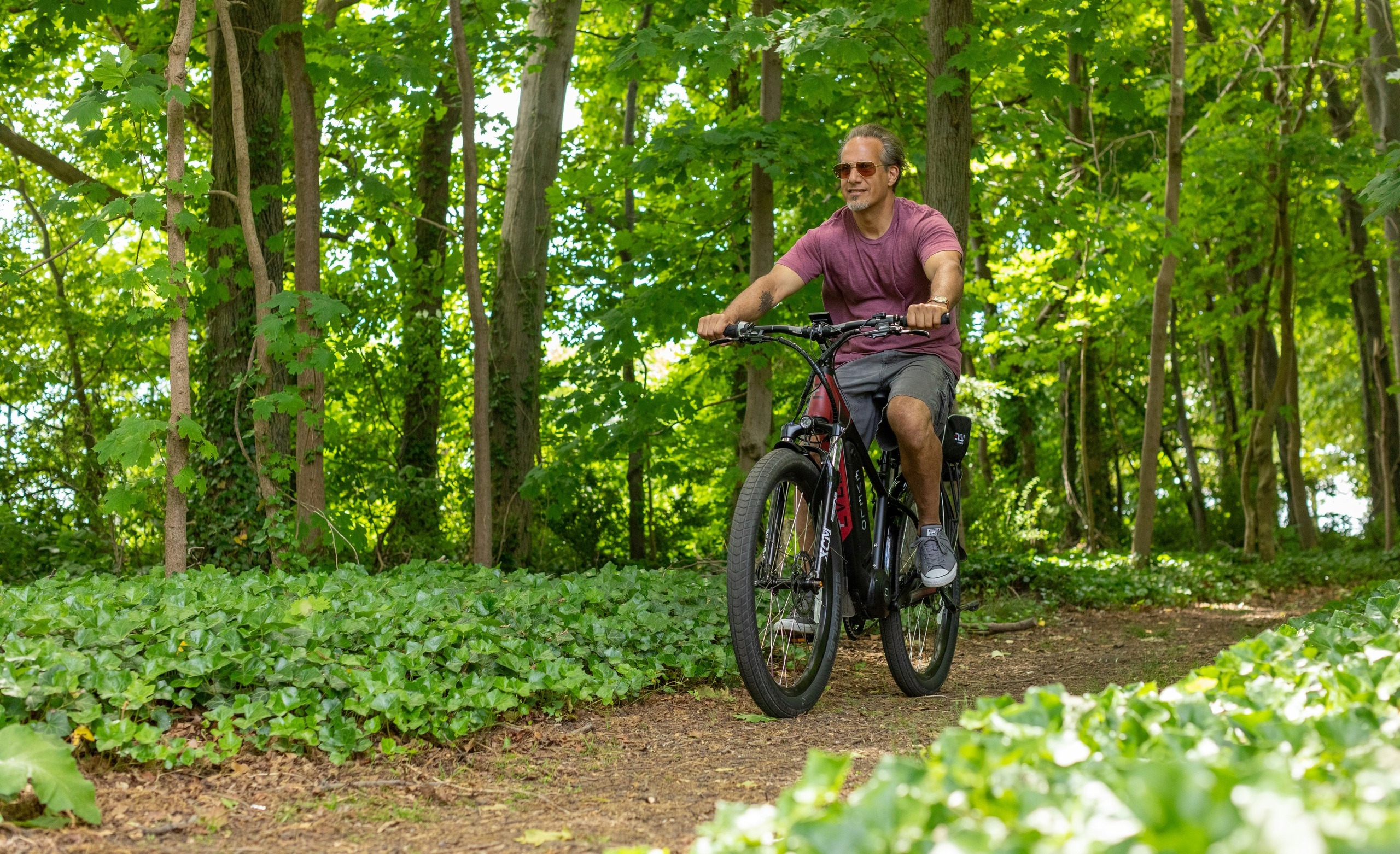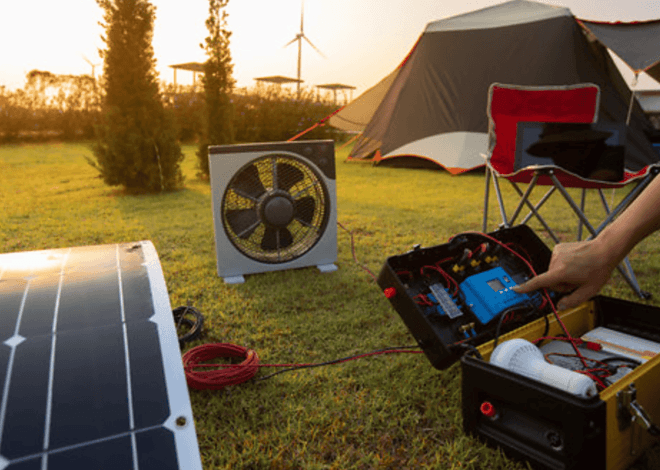
How To Build Your Own Electric Bicycle
Welcome to our DIY guide on how to build your own electric bicycle. Electric bicycles are changing the way we think about commuting and recreation. With their unique blend of traditional biking and modern technology, they offer an exciting alternative to cars and public transport.
Imagine cruising through your neighborhood with the wind in your hair, effortlessly gliding up hills without breaking a sweat. Building your own electric bicycle can be one of the most rewarding projects you ever undertake. Not only will you have a custom ride that perfectly fits your needs, but you’ll also gain hands-on experience with various components like motors, batteries, and electronics.
Whether you’re a seasoned DIY enthusiast or just getting started, this guide will walk you through everything you need to know about creating your very own electric bike from scratch. So let’s dive into this electrifying adventure!
Benefits of Owning an Electric Bicycle
Electric bicycles offer a unique blend of convenience and sustainability. With the push of a button, riders can conquer hills and long distances with ease. No more arriving at work sweaty or out of breath. They’re also eco-friendly.
By choosing electric over traditional vehicles, you contribute to reducing carbon emissions. Every ride is a step towards cleaner air in your community. Another perk? Cost savings on fuel and maintenance. Once you invest in an electric bike, your ongoing expenses drop significantly compared to gas-powered transportation.
Additionally, riding boosts physical health while being low-impact. You can enjoy cycling without straining yourself too much on tougher rides. E-bikes foster exploration and adventure. They open up new routes that may have seemed daunting before, allowing for spontaneous day trips or longer adventures into nature’s beauty.
Things to Consider before Building Your Own Electric Bicycle
Before embarking on your electric bicycle project, it’s essential to evaluate your needs and riding habits. Think about how you plan to use the bike: for commuting, leisure rides, or tackling challenging terrains? Each use case may require different components.
Budget is another critical factor. Electric bicycles can get pricey, especially if you opt for high-quality parts. Set a budget that includes materials and any potential upgrades. Consider the legal regulations in your area regarding electric bikes.
Different regions have specific laws governing speed limits and motor wattage. This information will guide you in choosing compatible components. Think about your skill level with tools and mechanics. Building an e-bike requires some technical knowledge; be prepared to learn new skills along the way or seek help from experienced builders when needed.
Necessary Materials and Tools
Building your own electric bicycle requires a mix of essential materials and tools. Start with a sturdy bike frame, preferably a mountain or hybrid model known for durability. Next, you’ll need an electric motor. Choose between a hub motor for simplicity or a mid-drive motor for better performance on hills.
A battery pack is crucial too—aim for lithium-ion options due to their lightweight and efficiency. Don’t forget the controller; it regulates power from the battery to the motor. Gather basic tools like wrenches, screwdrivers, and wire cutters.
A soldering iron may be necessary if you’re customizing electrical connections. Safety gear is vital during assembly; wear gloves and goggles to protect yourself while working. Having everything in place will streamline the building process and make it more enjoyable as you embark on this exciting project!
Step by Step Guide to Building Your Own Electric Bicycle
Step 1: Choosing the Right Bike and Motor Kit
Choosing the right bike is crucial for your electric bicycle project. Think about your riding style first. Do you prefer city commuting, off-road adventures, or leisurely rides? Each type of biking requires a different frame.
Next, consider compatibility with motor kits. Mountain bikes and hybrids are often great choices due to their sturdy frames. Look for a bike that allows easy integration of components without extensive modifications.
When it comes to selecting the motor kit, evaluate the power rating carefully. A 250W motor is perfect for casual use in flat areas, while those tackling hills may need something more robust—like a 750W or even higher.
Factor in your budget as well; there’s a range of options from affordable kits to premium ones with advanced features. Research brands known for reliability and performance before making your final decision so you can enjoy every ride on your new creation!
Step 2: Gathering Necessary Tools and Materials
Before diving into the assembly of your electric bicycle, it’s essential to gather all the necessary tools and materials. This step ensures a smooth build process without unnecessary interruptions.
Start by collecting basic hand tools like wrenches, screwdrivers, and pliers. A torque wrench might also be helpful for securing components to the right specifications.
Next, source specific parts from your chosen motor kit. Typically, you’ll need a motor controller, throttle, battery pack, and wiring harness.
Don’t forget safety gear! Gloves and goggles protect against accidental injuries during installation.
Having some zip ties or electrical tape on hand can help with cable management once everything is in place. Being organized will save time later on in the project.
Step 3: Preparing the Frame for the Motor
Preparing the frame for your electric bicycle is a crucial step. Start by ensuring that the bike is clean and free from any dirt or grease.
Next, examine the frame for compatibility with your motor kit. Some frames may require modifications to securely attach the motor. It’s essential to check alignment and spacing so everything fits perfectly.
If needed, use a file or sandpaper to smooth out rough edges where you’ll mount components. This not only ensures better attachment but also reduces wear on cables and wiring later on.
You should consider protective measures as well. Applying paint or sealant can help guard against moisture and corrosion, extending the life of your setup.
Double-check all measurements before proceeding to installation. A precise fit will make assembling much easier down the line.
Step 4: Installing the Motor Kit
Now it’s time to install the motor kit. Begin by carefully reading the instructions that come with your specific motor kit. Each model may have different requirements.
Position the motor on your bike frame, ensuring it’s aligned correctly with the chain and wheel. Secure it tightly using bolts or brackets provided in the kit. A firm installation is crucial for a smooth ride.
Next, connect any necessary components like sensors or controllers that came with your kit. Make sure wires are organized neatly to prevent tangles during rides.
Check for compatibility between all parts as you work through this step. If anything looks off, double-check before proceeding further; adjustments at this stage can save headaches later on.
Give everything a once-over to ensure stability and proper alignment before moving forward in your build process.
Step 5: Adding a Battery and Wiring System
When it comes to adding the battery and wiring system, precision is key. First, select a battery that suits your motor’s voltage requirements. Lithium-ion batteries are popular for their lightweight and efficiency.
Next, find the right mounting location on your bike frame. You want it secure yet accessible for charging. Use bracket mounts or a custom-made rack if necessary.
Wiring requires attention to detail as well. Begin by connecting the battery to the controller following manufacturer instructions closely. Ensure all connections are tight but not overly strained.
Don’t forget about safety! Insulate any exposed wires with heat shrink tubing or electrical tape to prevent short circuits.
Test each connection before moving on to avoid troubleshooting later in the process. Once everything is in place, you’ll be one step closer to hitting the road on your new electric bicycle!
Step 6: Customizing Your Electric Bicycle
Once your electric bicycle is up and running, it’s time to make it truly yours. Customization adds personality and functionality.
Start with the aesthetics. Consider adding unique paint or decals that reflect your style. Choose colors that pop or go for a sleek minimalist look.
Next, think about comfort enhancements. A new seat can make long rides more enjoyable. Ergonomic grips are another excellent addition for better handling on those bumpy paths.
Don’t forget about practicality! Installing a sturdy rack allows you to carry essentials easily during commutes or grocery runs. Adding lights enhances safety during nighttime rides.
Consider tech upgrades like a smartphone mount or additional storage solutions for tools and accessories as you venture out on different terrains. Each custom touch not only personalizes your ride but also elevates your overall cycling experience in delightful ways!
Troubleshooting Tips
When building your own electric bicycle, some bumps along the way are common. Here are a few troubleshooting tips to help you navigate any issues that may arise during your build. If the motor isn’t working after installation, check all connections first.
Loose or incorrectly connected wires can cause power failures. Ensure that the throttle is functional and properly calibrated too; sometimes, it takes a bit of adjustment for everything to sync up perfectly. Battery problems often crop up as well.
If you’re not getting enough range from your bike, verify that the battery is charged fully and securely attached to the frame. A faulty battery management system could also be at fault here—make sure it’s in good condition and functioning correctly.
Pay attention to unusual noises coming from the motor or wheels while riding. Grinding sounds might indicate misalignment or insufficient lubrication on moving parts. Regular maintenance checks can prevent these annoyances before they escalate into bigger issues.
If you’re experiencing performance fluctuations, consider evaluating gear ratios and tire pressure for optimal efficiency on different terrains. Proper adjustments can significantly enhance your ride quality. With patience and a little know-how, most challenges you face during this exciting project will become manageable hurdles rather than roadblocks!
How to Make it Street Legal
To make your electric bicycle street legal, start by checking local regulations. Laws vary significantly from one area to another. Most regions require specific features, such as working lights and a horn or bell. Install front and rear lights for visibility during night rides. A reflective vest can also enhance safety.
Speed limits often apply to electric bikes, usually capping at 20 mph in many areas. Ensure that your bike’s motor complies with these restrictions. You may need to cap the speed if it exceeds this limit. Registration might be necessary in certain locations; inquire about the process through your local DMV or transportation authority.
Ensure you have liability insurance. This step not only protects you but also adds legitimacy to your ride on public roads.
Maintenance and Upkeep of Your Electric Bicycle
Maintaining your electric bicycle is crucial for performance and longevity. Regular checks on the battery are essential. Ensure it remains charged and free from corrosion at terminals. Inspect the tires frequently. Look for wear and ensure they’re properly inflated.
This helps with efficiency and safety during rides. The brakes are another vital component. Test them often to confirm they engage smoothly without any grinding sounds. Adjustments may be necessary over time. Clean your bike regularly, focusing on the drivetrain components like the chain, gears, and derailleurs.
A clean bike runs better and prevents premature damage from dirt buildup. Keep an eye on electrical connections. Loose wires can lead to malfunctions or reduced performance of your e-bike’s motor system. By paying attention to these details, you can enjoy a smooth ride while extending the life of your electric bicycle significantly.
Safety Tips for Riding an Electric Bicycle
When riding an electric bicycle, prioritize your safety by wearing a helmet. It’s essential for protecting your head in case of falls or accidents. Use lights and reflectors, especially when cycling at night. Visibility is key to staying safe on the road. Bright clothing can also help you stand out.
Stay aware of your surroundings. Use mirrors if necessary to keep track of vehicles and pedestrians nearby. Always signal when turning or changing lanes. Follow traffic rules just like any other vehicle on the road. This includes stopping at stop signs and obeying traffic signals.
Maintain a steady speed while being mindful of cyclists around you. Sudden stops or sharp turns can lead to collisions. Avoid distractions such as mobile phones while riding. Focus is crucial for navigating safely through varying conditions and environments.
Conclusion
Building your own electric bicycle can be a rewarding project that not only saves you money but also gives you the satisfaction of creating something unique. With the right materials and guidance, it’s an achievable task for beginners and seasoned DIY enthusiasts alike.
Embracing this challenge opens up a world of possibilities in terms of customization and performance. Whether you ride for leisure or use your e-bike for commuting, having a personal touch is invaluable. Remember to consider local regulations to ensure compliance when riding on public roads.
Prioritize safety with proper maintenance practices and keep your bike in top shape. The journey doesn’t stop once you’ve built your electric bike; it’s about enjoying the ride while making sure you’re always prepared and informed as you venture out into new terrains! Happy cycling!



